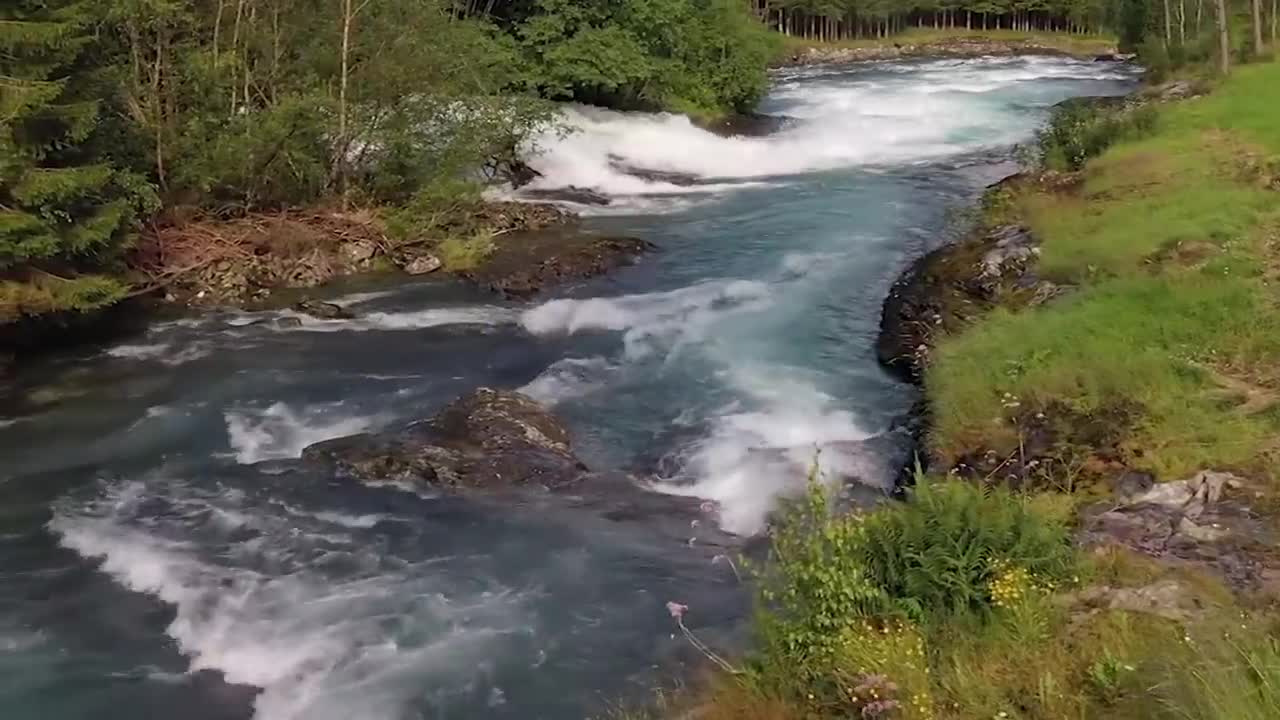Premium Only Content

How Saudi Arabia Is Turning Its Deserts Into Farmland Oasis
Description
How Saudi Arabia is Turning it's Desert into a Farmland Oasis
45K
Likes
60,13,267
Views
18 Oct
2021
How Saudi Arabia's is Turning it's Desert into an Oasis
regenerative agriculture desert oasis saudi arabia agriculture farming desertification center pivot irrigation desert farming in saudi arabia desert farming sustainability fight climate change regreening deserts global warming China Turns Desert into Green Forests desert into forest terraforming the sahara desert desert into oasis, desert into green, desert into fertile land desert into farmland Regreening the desert with John D. Liu, Arabia Oasis
In today's video, we're going to introduce How Saudi Arabia's is Turning it's Desert into an Oasis
Large areas of the desert have been turned into agricultural fields. This transformation can be definitely called as a major accomplishment for a country. Especially when the country receives an average of about 4 inches of rain a year.
In today's video, we are going to tell you how and why Saudi Arabia is turning its deserts into huge farmlands. So stick with us and let's dive into our today's video.
Saudi Arabia is called as a desert kingdom! The country's wealth soared when oil was discovered. It utilizes billions of dollars of oil earnings to fuel many aspects of its economy and the lives of its citizens. One of these elements is the Kingdom's food supply, which imports more than 80% of its required food using oil revenue. Approximately, just 1.5 percent of Saudi Arabia's land area is arable, and what agriculture the nation does have consumes 80 percent of the country's limited water supply. While the kingdom is now food secure, agriculture in Saudi Arabia has been a key focus for those looking to increase the country's sustainability and mitigate the danger of global food supply network failures.
1970s marked the beginning of serious agricultural development in the Kingdom. And by 1990 Saudi Arabia was one of the largest wheat exporters in the world. Not just wheat, it also exports vegetables, fruits, dairy products and dates.
Now just think of Saudi Arabia. Also to encourage agricultural research and training institutions. Huge circular greeneries are all across the country. And there are farmlands in the middle of the desert as well. Surprisingly, in the past 60 years, Saudi Arabia has transformed 24 000 square kilometers of desert into fertile land.
When we talk about the western mountainous region of Saudi Arabia, mostly rainfall and flows back to the sea unused. This means Saudi Arabia is suffering from water loss and this also affects its agriculture. But to meet the needs of its people, Saudi Arabia planned smartly and has brought agricultural lands in US, Indonesia, Argentina and other African countries.
The mountain terraces trapped water and gave life to soil.
After that comes another project. The government launched the Al-Baydha project to manage the flood water that was directly going to sea unused. If the entire west coast is covered under this project then 30 million acres can be transformed into agricultural land. But this will cost billions of dollars and time.
Positively, the agricultural capacity of Saudi Arabia could be multiplied by a minimum of 6 times which will increase the GDP up to 5%. It will be helpful to reverse desertification as carbon gases will again be fixed to fertile soil and this will result in rainfall in the region.
To supply the population with fresh water, Saudi Arabia is using another tactic. That is to use desalination plants to de-salinate the seawater into freshwater. One method for desalination is by using thermal gases and the other is by membrane-based reverse osmosis which runs by using electricity. This electricity is harnessed by nuclear power.
So before you get confused lets simplify it. To make a land green, we need water and for water we need to desalinate it, for desalination nuclear energy is required. All of this is interconnected. Facilities have also been put into place to treat urban and industrial runoff for agricultural irrigation.
Liquid Nano-clay (LNC) serves as another important tactic. This is being used nowadays that can save water consumption by 50% but it is quite expensive. LNC is a treatment that gives the sand a clay coating so that it can trap water efficiently.
Saudi Arabia has also allocated financial resources for agricultural research purposes to further improve its agriculture system.
If you liked the video, please SUBSCRIBE, Hit the bell button🔔, like, comment and share. Stay safe and all the best.
-
 1:57:31
1:57:31
2 MIKES LIVE
12 hours ago2 MIKES LIVE #170 with special guest Rep. Buddy Carter (R-GA)
47.7K1 -
 1:02:58
1:02:58
Flyover Conservatives
22 hours agoA Doctors Response to Trump’s First Moves: W.H.O. and FDA - Dr. Troy Spurrill; A REAL-LIFE Approach to Health and Wellness Transformation - Kellie Kuecha Moitt | FOC Show
48.1K3 -
 41:50
41:50
State of the Second Podcast
8 hours agoWhat do Gold and Guns have in common?
20K4 -
 1:01:26
1:01:26
PMG
4 hours ago $1.18 earnedLibs In FULL PANIC Since Trump Took Office! Creating a Faith to Fit their Agenda
14.8K4 -
 7:09:22
7:09:22
Dr Disrespect
12 hours ago🔴LIVE - DR DISRESPECT - TRIPLE THREAT CHALLENGE - EXTREME EDITION
246K33 -
 55:00
55:00
LFA TV
12 hours agoThe End of the January 6 Hoax | TRUMPET DAILY 1.22.25 7pm
40K11 -
 1:13:37
1:13:37
Battleground with Sean Parnell
10 hours agoPresident Trump Is On FIRE w/ Savage Rich Baris
180K25 -
 1:59:59
1:59:59
Melonie Mac
6 hours agoGo Boom Live Ep 34!
73K17 -
 49:27
49:27
Sarah Westall
5 hours agoTrillion Dollar 5G Lawsuit, Project Archimedes, Mind Control & DEW Weapons w/Attorney Todd Callender
74.4K33 -
 53:11
53:11
Standpoint with Gabe Groisman
1 day agoTrump Is Crucial For Hostage Agreement Says Israeli Colonel
52.6K5